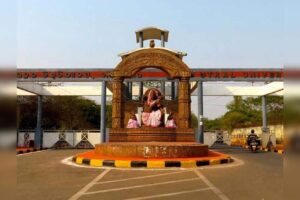Daily News Analysis Report – March 3, 2025
Challenges Ahead of Women Panchayat Members in India
The panel on the Ministry of Panchayati Raj has identified several obstacles that prevent women elected representatives (EWRs) from exercising independent decision-making power in local governance. The 73rd Constitutional Amendment Act (1992) mandated that one-third of all seats in Panchayats be reserved for women, a move later extended to 50% in many states. However, issues such as the ‘Sarpanch Pati Syndrome,’ where male relatives act as de facto decision-makers, hinder true female empowerment. Many women also lack political training, face bureaucratic resistance, financial dependence, and threats of gender-based violence. Strengthening the decision-making capabilities of EWRs through training initiatives, financial independence programs, and legal measures against proxy representation is crucial for achieving gender-responsive governance.
EC Addresses Concerns Over Duplicate Voter ID Numbers
The Election Commission of India (ECI) has acknowledged issues regarding identical Electors Photo Identification Card (EPIC) numbers being issued to voters in different states. Before the introduction of ERONET, states used independent electoral roll management systems, leading to duplication, especially among migrant voters. The implementation of ERONET 2.0 aims to streamline voter databases and eliminate such irregularities. The National Electoral Rolls Purification & Authentication Program (NERPAP) of 2015 was an earlier effort to link EPIC data with Aadhaar to ensure a ‘one voter, one vote’ system. However, concerns over privacy and citizenship verification remain key challenges in fully implementing voter ID-Aadhaar linkage.
Remote Tribal Village Gets Power Connection for the First Time
A tribal village in the Male Mahadeshwara Hills of Karnataka has received electricity for the first time, marking a significant milestone in rural electrification. This achievement falls under the Deen Dayal Upadhyaya Gram Jyoti Yojana (DDUGJY), which focuses on feeder separation, strengthening power distribution infrastructure, and providing subsidized electricity to rural households. Electrification enhances education, healthcare, economic opportunities, and women’s empowerment in remote areas. However, infrastructure gaps, affordability concerns, and the need for renewable energy integration remain pressing challenges in achieving 100% rural electrification.
Progress of Direct Benefit Transfers
Finance Minister Nirmala Sitharaman announced that 1,100 out of 1,200 government schemes are now covered under Direct Benefit Transfer (DBT), ensuring direct payments to beneficiaries’ bank accounts. Since its inception in 2014, DBT has played a key role in eliminating financial leakages, reducing corruption, and ensuring targeted welfare delivery. The JAM Trinity (Jan Dhan, Aadhaar, Mobile) has been instrumental in streamlining payments for schemes like PM-KISAN, MGNREGS, and PM Awas Yojana-Gramin (PMAY-G). DBT has saved the government ₹3.5 lakh crore and is internationally recognized by institutions like the World Bank and IMF as a model for transparent welfare distribution.
Impact of GeM on India’s Economy
The Government e-Marketplace (GeM), launched in 2016, has revolutionized public procurement by ensuring transparency, cost efficiency, and wider market access for small businesses. GeM’s initiatives like SWAYATT (boosting procurement from startups and women entrepreneurs), Startup Runway 2.0, and Womaniya (promoting women-led enterprises) have increased participation in government contracts. Nearly 50% of GeM orders are from Micro, Small, and Medium Enterprises (MSMEs), contributing to their financial growth. The online platform’s competitive pricing model has resulted in significant cost savings for the government. As GeM evolves, it is poised to enhance ease of doing business and promote inclusive economic development.
National Waterways (Construction of Jetties/Terminals) Regulations, 2025
The Ministry of Ports, Shipping, and Waterways has introduced new regulations, formulated by the Inland Waterways Authority of India (IWAI), to promote private sector participation in developing jetties and terminals along national waterways. These regulations mandate that any entity, including private players, must obtain a No Objection Certificate (NoC) from IWAI before setting up terminals. The initiative aims to boost inland water transport, reduce logistics costs (currently 14% of GDP), and encourage eco-friendly cargo movement. Incentives under schemes like Jalvahak, Jal Marg Vikas Project (JMVP), and the Sagarmala Project are expected to enhance India’s waterway infrastructure and reduce congestion on road and rail networks.
Additional Key Developments
President Droupadi Murmu visited the UNESCO World Heritage Site of Dholavira in Gujarat, a major Harappan civilization site. The Supreme Court reviewed Article 136 of the Constitution, which allows the apex court to grant special leave to appeal in exceptional cases. A study published in Nature Communications examined the sources and health impacts of PM2.5 pollution in India, linking high oxidative potential levels to severe respiratory and cardiovascular risks. The Indian Council of Medical Research (ICMR) and AIIMS identified excessive selenium levels in wheat as a potential cause of hair loss in certain regions. Genetic researchers discovered Ultra-Conserved Elements (UCEs) in DNA that regulate protein production, opening new avenues for studying genetic disorders. The Kurdish issue resurfaced after the Kurdistan Workers’ Party (PKK) announced a ceasefire in its long-standing conflict with Turkey. Firefly Aerospace’s Blue Ghost became the first private lunar lander to touch down successfully, supporting NASA’s Artemis mission goals. The Euclid Space Mission of the European Space Agency (ESA) captured an Einstein Ring, a rare gravitational lensing phenomenon. Scientists have developed gene therapy for Maple Syrup Urine Disease (MSUD), a rare genetic disorder. Astronomers observed a rare planetary parade, with multiple planets appearing aligned in the night sky. Lastly, the Indian Air Force conducted Exercise Desert Hunt 2025, a joint special forces drill with Para (SF), MARCOS, and Garud commandos.
India’s continued efforts in political empowerment, financial transparency, scientific advancement, and infrastructure development are shaping the nation’s future. Strategic interventions in these areas will be critical in ensuring long-term sustainable growth and governance reforms.
Source link



